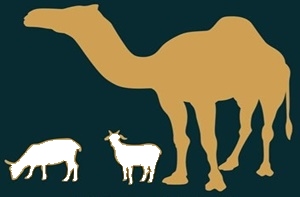Cryoconservation du sperme et des embryons chez les petits ruminants
Résumé
La congélation du sperme et des embryons est une biotechnologie importante pour la conservation et propagation de la génétique. L’objectif de cet article est discuter les techniques de congélation établies ainsi que les acquisitions récentes dans ce domaine chez les ovins, caprins et petits ruminant sauvages. L’utilisation du sperme congelé en production est plus développée chez les caprins que chez les ovins. Ceci est principalement dû au besoin de l’utilisation de l’insémination par laparoscopie chez les brebis. La plus grande différence entre les caprins et les ovins est le comportement du plasma séminal vis as vis des protéines du jaune d’œuf. Récemment, les efforts de recherches se sont penchés principalement sur le développement de nouvelles approches pour l’amélioration des dilueurs de congélation. Les axes les plus importants étant le remplacement des protéines animales (jaune d’œuf et lait) par les lécithines végétales, l’utilisation de cryoprotcteurs autres que le glycérol, et la réduction des effets de l’oxydation des lipides. L’introduction de méthodes d’analyses de la morphologie et fonction des spermatozoïdes, telles que les techniques de fluorescence, les tests hypopsmotiques et l’évaluation numérique de la mobilité, permet une évaluation plus rigoureuse des effets de ces facteurs sur la congélabilité du sperme La conservation des embryons des petits ruminants par vitrification se développe de plus en plus et pourrait remplacer les techniques lentes, plus laborieuses et coûteuses. Chez les ovins, les morulas et blastocystes semblent être plus résistants à la congélation. Par contre chez les caprins, les blastocystes en expansion et éclos sont plus résistants à la congélation que les morulas et jeunes blastocyste. Les taux de gestation obtenus après transfert d’embryons congelés sont très intéressants surtout quand la gestion des receveuses est adéquate et les techniques de transfert sont maîtrisées.
Mots-clés: Congélation, sperme, embryons, insémination, fertilité, dilueurs.
Téléchargements
Full-text of the article is available for this locale: English.

Téléchargements
Publié-e
Comment citer
Numéro
Rubrique
Licence

Revue Marocaine des Sciences Agronomiques et Vétérinaires est mis à disposition selon les termes de la licence Creative Commons Attribution - Pas d’Utilisation Commerciale - Partage dans les Mêmes Conditions 4.0 International.
Fondé(e) sur une œuvre à www.agrimaroc.org.
Les autorisations au-delà du champ de cette licence peuvent être obtenues à www.agrimaroc.org.

